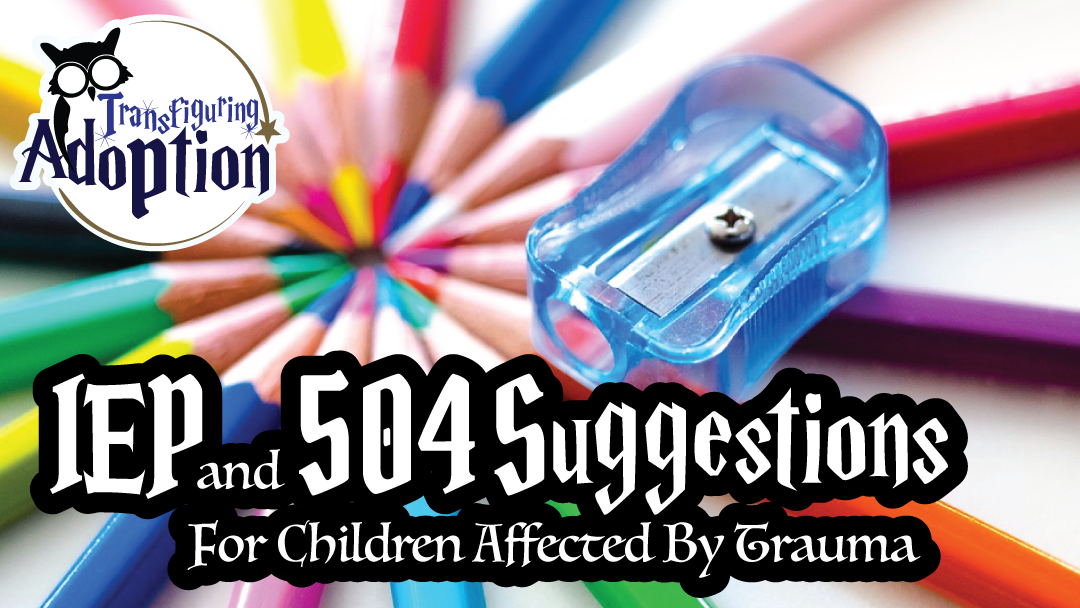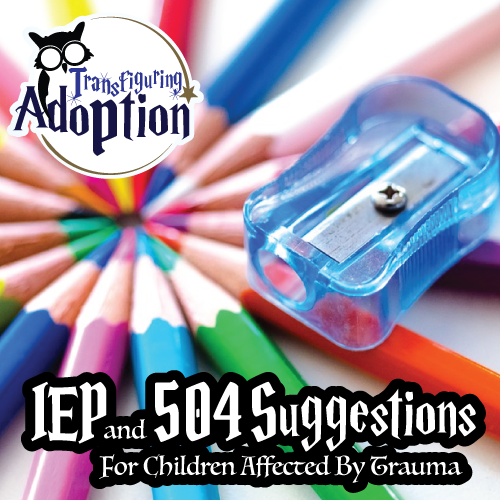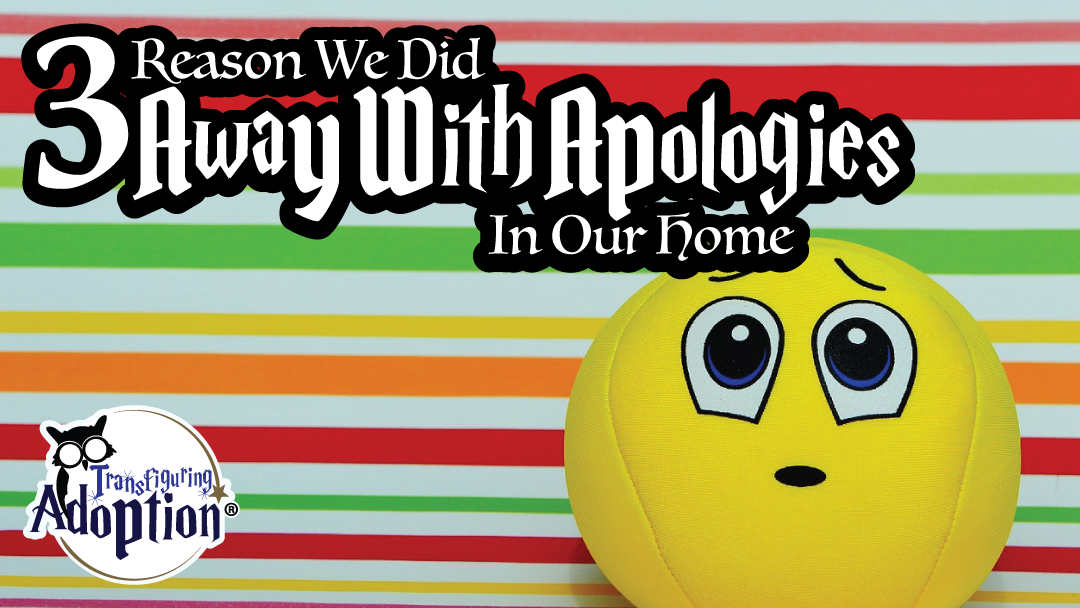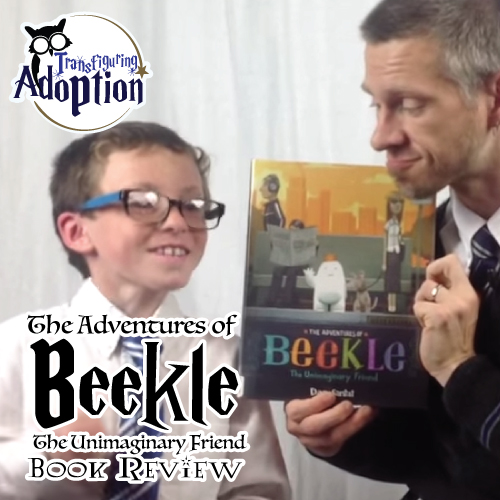But How Does Trauma Affect Him in the Classroom?
I actually had a school psychologist ask me this last year when I was advocating for a child. Of course, the child had just received eligibility for medical reasons, but the REAL need for an IEP related more to PTSD – Post Traumatic Stress Disorder. What this psychologist did not understand is that the brain of a child who has endured chronic trauma is not open and available for learning. These children’s lives are lived in the lower, more primitive areas of their brain that control survival. While we as adults know that the child is generally safe at school, these children are consistently terrified unless certain actions are taken to make them feel safe so that the higher parts of their brains may be turned on for learning.
“..these children are consistently terrified unless certain actions are taken to make them feel safe so that the higher parts of their brains may be turned on for learning.”
Typical strategies do not work with traumatized kids. Rewards and punishment do not work. Typical classroom management does not work. Waiting for several hours for food and hydration kicks their brains into survival mode. Trauma triggers switch them into fight, flight, or freeze. Therefore, their individualized education plans (IEPs) or 504 plans at school need a different angle. At the bottom of this post, I have compiled a list of possible suggestions for IEPs and 504s. Every child is different, so seeking out the most appropriate accommodations and modifications are important for your child. Also, keep in mind that wording is important. The language of the IEP or 504 should come across as team efforts to come alongside and assist the child in need and not directed at the child as a problem!
One of the absolute best resources as far as a book for parents and school staff is [Help for Billy] by Heather Forbes. Many of the ideas below are included in the book along with detailed explanations of why these kids need different strategies and learning environments. I highly recommend you read it and pass it on to all teachers your child interacts with.
I have a few additional thoughts for foster and adoptive parents.
- Remember that this is not a sprint
Bringing kids toward healing is a marathon….an ultra marathon at that!! Darren and I value education highly, but we came to a realization along the journey that if these kids do not learn the basics of relationships and lifeskills, no amount of math and reading is going to help them succeed in life. If we spend most of the rest of their childhoods ensuring they understand how to interact with, communicate with, work with, and live with others, and they need a few extra years to catch up on academics, so be it. They can then achieve real success. Without those skills, reading and math will not help them necessarily hold down a job or maintain satisfying friendships or relationships. - No Homework
To that end, we have many times recommended a “no homework” clause for foster and adoptive children, especially in the early parts of placement. (This is not a forever modification!) We learned the hard way when older elementary kids who struggled with school moved in, and instead of bonding and connecting and healing as a family, we were spending every night being wedged further apart by homework issues. We had to tell the school eventually that we had more complicated matters at home, and home would be home, and school would stay at school.
Categorized Suggestions:
Class Time
- Frequent breaks
- Sensory breaks
- Safe adult mentor
- Access to a water bottle at all times
- One-on-one assistance, aid, or inclusion teacher
- Assistive technology (voice recorder, smart pen, etc.)
- Access to noise-canceling or noise-reducing headphones
- Preferential seating (by door to allow breaks, by teacher in front of class to minimize distractions, in the back of the room to decrease feelings of threat from people behind, away from distractions like air conditioners, etc.)
- Allow student to stand at desk
- Seated on fitness ball or wiggle seat; bands around chair legs for resistance
- Reduced visual and auditory stimuli around classroom
- Reading tracker for reading
- Paper to cover all problems but the problem being completed
- Keep groups small (no more than 5 students) for activities
- Give tasks, directions, or assignments one at a time to prevent stressing and overwhelming student
- Assign a study buddy
- Allow student to help another student in an area in which they excel to help bolster confidence
- Safe place to retreat when child needs to self-regulate
- Access to sensory or self-regulation tools (stress ball, chewing gum, fidgets, etc)
- Shortened assignments
- Advance notice and preparation time for transitions
- Adult or peer to aid in transitions
- Advance notice and preparation time for changes in the daily routine, field trips, etc.
- Visual schedule for student to carry
- Post daily schedule in classroom
- Access to mid-morning and mid-afternoon snacks (ideally, food—protein—offered every two hours)
- Movement or sensory activities at least every two hours (Brain Gym as a whole-class activity)
- Extended response time (whether oral or written)
Tests
- Extended time
- No timed tests
- Alternate format (oral, multiple choice)
- Scribe to write for student
- Shortened tests
- Completed in a small group
Lunch
- Alternative location to eat rather than cafeteria
- Safe adult to eat with
Recess
- Smaller area to play in
- Adult to come alongside and help child learn to interact and act as a safe home base
Specials
- Staff made aware of plans for child
Homework/Assignments
- Extended time
- Alternative assignments (include creative assignments)
- Exemption from all homework (possibly for a pre-determined amount of time)
- Activities broken down into smaller assignments
- Limit number of problems on page; increase white space to decrease overwhelm and stress
- Shortened assignments
- Advance notice
- Allow parent to transcribe the student’s work
- Substantially reduce amount of written work
Discipline
- Absolutely no use of isolation
- Time-ins (with the teacher or trusted adult) versus time-outs
- View behavior as a message communicating a need and look for a way to meet the need







ewei319
Thanks so much, this is so great! I hope it’s ok that I add these strategies to a website I’m compiling of resources on how to help students who have experienced trauma/ACEs (and cite you of course!)
Rachel
What is your website? I would love to check it out. Thank you
Pingback: Back to School for Adoptees With Childhood Trauma - Nightlight Christian Adoptions